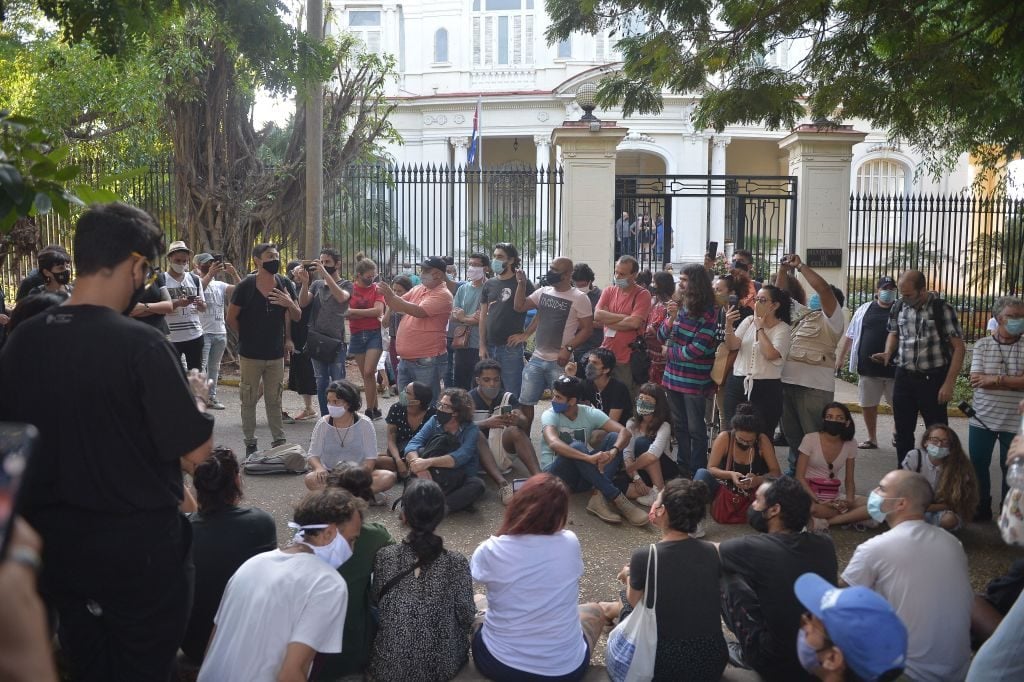Art World
Havana Officials Reached a Historic Agreement With Protesters Over Artistic Freedom. Then Cuba’s President Denounced the Deal
The culture minister met with Tania Bruguera and other artists for hours over the weekend.

The culture minister met with Tania Bruguera and other artists for hours over the weekend.

Brian Boucher

Whatever new hopes for bolstering artistic freedom in Cuba emerged out of a historic meeting this past weekend between dissident artists and Havana officials have already been quashed.
A crowd of 300 protesters had gathered outside the culture ministry on Friday, leading Fernando Rojas, the deputy culture minister, to invite in a group of 30 of them. The meeting lasted for more than four hours, those present have said, and resulted in a promise of greater freedoms for artists. Writer Katherine Bisquet told the press afterward that there had been a “truce for independent spaces” where activists could meet and talk, and that further discussions were promised.
“I cannot emphasize enough that this kind of public protest, with hundreds of people standing outside a ministry for 14 hours, is unprecedented,” Cuban-American artist Coco Fusco told Artnet News. “The fact that government officials conceded to a meeting is in itself a victory for the artists and a sign of weakness on the part of the government.”
But any hopes for reconciliation seem to have dissipated. Cuban president Miguel Díaz-Canel has since denounced the protesters, including artist Tania Bruguera. Meanwhile, state-run media and websites have called the protests a “farce” and an “imprerialist reality show,” according to NBC.
Bruguera has responded by dismissing Rojas as a middle man and calling on Díaz-Canel to speak to the protesters himself. “At this point of crisis, an interlocutor with real decision-making power is needed,” she told NBC.
It has been two years since the government enacted Decree 349, which requires artists to obtain government approval before presenting their work. Artists like Fusco and Bruguera immediately raised their voices against the new law, which seeks to control the content of art.
But the immediate cause of the recent demonstrations was a Thursday night police raid targeting a collective known as the San Isidro Movement, which formed in 2018 and includes artists along with musicians, professors, scientists, and ordinary citizens. Authorities claimed that the raid was an effort to enforce social-distancing regulations, but critics say that was a false pretense to justify arresting its members, who were livestreaming a hunger strike against the government.
“The Cuba police state has been so effective in instilling fear that many believe that getting involved with dissidents leads to social death,” Fusco said. “But the mounting rage over repression of the independent arts sector explains why a very heterogeneous group that included filmmakers, visual and theater artists, LGBTQ activists, and human rights activists dissented in public. That kind of thing is exactly what the repressive forces in Cuba want to hide. They don’t want the rest of the population to get any ideas.”
Nonetheless, the movement is growing in popularity, Fusco said, leading the government to use state media to discourage further participation.
“That’s why there’s a smear campaign going on right now in Cuban official media against the San Isidro Movement,” Fusco said. “They have to try to prevent this outpouring of dissent from becoming viral.”